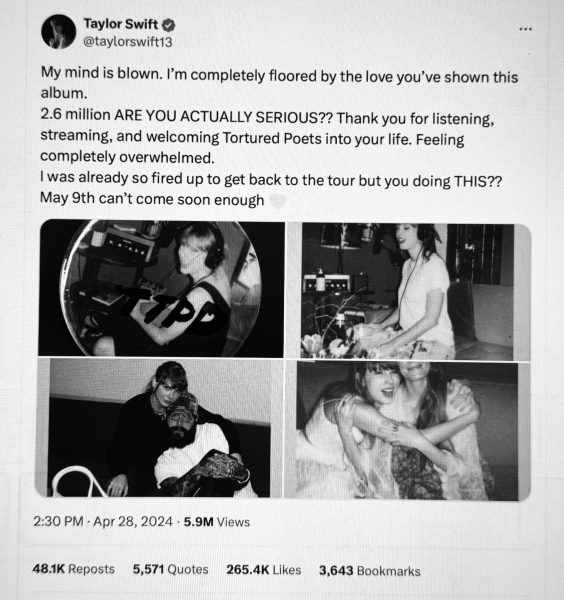New Glass causes public unease
Graphic courtesy of stopthecyborgs.org.
Google’s newest and “best” was put on a pedestal and sold one day only on April 15th — Google Glass. Google won’t divulge exactly how many units were sold that day, but it’s reported to be numbered in the thousands.
Google Glass is sold in frame colors of cotton white, charcoal, shale, tangerine and sky blue. The Glass is paired with a Google-created Explorer program that monitors the usage and capabilities of Google Glass. The technology and Explorer program enrollment cost the proud new owners $1,500 and were sold out in a matter of hours.
Glass is a technology that should not yet be introduced to the American public because the general non-techie public isn’t ready for wearable technology. Wearable technology has the potential to be a nuisance. It has a great possibility of infringing on privacy and further handicapping the forever-deteriorating face-to-face interactions and communications of people.
The upside to owning Glass is the potential to increase daily life productivity of some people. For instance, if I were a baker, it would be more efficient to have the recipe right in my line of sight rather than continually checking a recipe card on the counter or on a computer screen. If a student in high school is unsure where their future may lie, Glass could allow them to call up videos that show what a day in the life of a doctor or diesel mechanic is like.
So far, Glass has proved very useful to select professions. Doctors have used glass while in surgery, and when immediate consultation was needed while in surgery, the doctor was able to contact a distant college on how to proceed with the surgery.
Glass can show you directions while driving so your eyes don’t need to leave the road to look at a map or GPS unit. You would simply glance up with your eyes to see the navigation directions while still having both eyes on the road.
Beside the obvious price tag, all technology is developed with planned obsolescence in mind. In a short period of time, Google will come up with improvements and offer a Glass 2. Samsung already has begun developing its own version of Glass.
Why would someone pay such a high price for technology that will soon be outdated and is overwhelmingly ridiculed by most of the general public?
Even before its inaugural public sale, Glass was banned in many establishments. Why would someone spend over a thousand dollars on something that will eventually be banned and unusable in public places? Glass can’t be worn in banks, dressing rooms, bars and clubs, concerts, hospitals, theatres, schools, casinos and in some states, it’s banned while driving. Basically, you can’t wear Google Glass anywhere the public regularly mingles.
Google has launched this highly specialized, narrowly based technology at the wrong time. Not only is it available for purchase only in the U.S., it is also not yet available to the general public. The one-day only sale was a marketing hype to try to raise excitement for consumers to buy this very pricey toy. Some overzealous consumers fell victim to the lure of a rare item being sold for a limited time, while many others, like me, are completely adverse to it.
As it is, we are continually glued to our tablets, laptops and smart phones. These devices, however amazingly efficient they may make our daily tasks, have also begun to ruin our lives. Girls in high school will sit at a lunch room table, all on their phones texting each other. They just need to put down the phone and talk.
I saw a mother and father out for Easter brunch, both infatuated with their phones, while their adorable daughter poured applesauce all over her head because she was not being monitored.
There have been reports of people even falling into manholes because they weren’t paying attention to their surroundings while texting and walking.
I am not a supporter of Google Glass. However, the sad truth is that in the future, we may all be required to use such technology for our jobs as demands for better and more efficient technology become mainstream.
Margaret Upton is a staff writer for The Dakota Student. She can be reached at [email protected].










